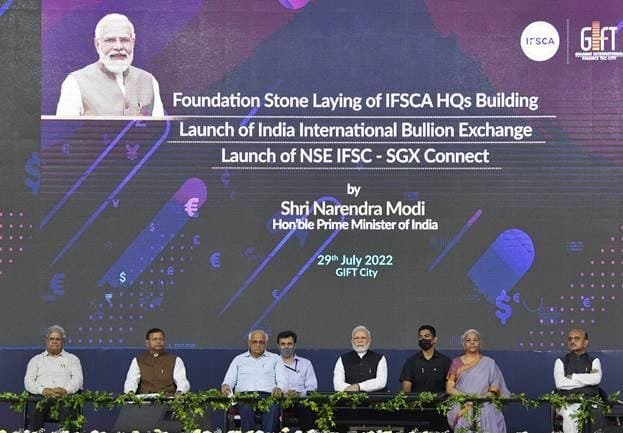Big boost for real estate
In a major move to boost liquidity in the market, the RBI on 17 April 2020 announced several additional measures to accelerate the economy and facilitate bank credit flows in Lockdown 2.0.
Among the various measures announced, commendably its allotment of Rs.10,000 crore to National Housing Bank is a big move for the real estate sector reeling under the liquidity crisis.
This will help provide capital to Housing Finance Companies and eventually provide major relief to developers battling liquidity issues in COVID-19 times, said Anuj Puri, Chairman of ANAROCK Property Consultants.
Further, RBI has reduced the reverse repo rates by 25 bps – it now stands at 3.75%. This is another big step as the rate cut will definitely send out positive signals in the current times and will enable banks to lend even more.
Also, in another major relief to developers, the RBI has further extended the date of commencement of commercial operations (DCCO) of project loans for commercial real estate projects which are delayed for reasons beyond the control of promoters.
This is indeed a big move and will bring much-needed relief to cash-starved developers, believes Puri.
It will help in easing out time for maintaining and managing cash flows for these developers, he said.
The RBI’s 17 April 2020 proposed measures are to:
maintain adequate liquidity in the system and its constituents in the face of COVID-19 related dislocations;
facilitate and incentivise bank credit flows;
ease financial stress; and
enable the normal functioning of markets.
The RBI has moved in a calibrated fashion to ensure conducive financial conditions and normalcy in the functioning of financial markets and institutions.
The initial efforts to provide adequate system level liquidity are reflected in the sizable net absorptions under reverse repo operations.
With this achieved, the RBI has undertaken measures to target liquidity provision to sectors and entities which are experiencing liquidity
constraints and/or hindrances to market access.
Long term repo operations (LTROs) to ensure adequate liquidity at the longer end of the yield curve, exemptions from the cash reserve ratio for the equivalent of incremental credit disbursed by banks as loans in certain select areas/segments and targeted LTROs or TLTROs fall in this class of sector-specific measures.
It is, however, observed that the deployment of TLTRO funds so far has largely been to bonds issued by public sector entities and large
corporates, especially in primary issuances.
The disruptions caused by COVID-19 have, however, more severely impacted small and mid-sized corporates, including non-banking financial companies (NBFCs) and micro finance institutions (MFIs), in terms of access to liquidity.
Targeted Long-Term Operations (TLTRO) 2.0
Accordingly, it has been decided to conduct targeted long-term repo operations (TLTRO 2.0) for an aggregate amount of Rs.50,000 crore, to begin with, in tranches of appropriate sizes.
The funds availed by banks under TLTRO 2.0 should be invested
in investment grade bonds, commercial paper, and non-convertible debentures of NBFCs, with at least 50% of the total amount availed going to small and midsized NBFCs and MFIs. The guidelines will spell out the details.
These investments ave to be made within one month of the availment of liquidity from the RBI.
As in the case of TLTRO auctions conducted hitherto, investments made by banks under this facility will be classified as held to maturity (HTM) even in excess of 25% of total investment permitted to be included in the HTM portfolio.
Exposures under this facility will also not be reckoned under the large exposure framework. Notification for the first TLTRO 2.0 auction were issued on 17 Apr 2020.
Refinancing Facilities for All India Financial Institutions (AIFIs)
All India financial institutions (AIFIs) such as the National Bank for Agriculture and Rural Development (NABARD), the Small Industries Development Bank of India (SIDBI) and the National Housing Bank (NHB) play an important role in meeting the long-term funding requirements of agriculture and the rural sector, small industries, housing finance companies, NBFCs and MFIs.
These All India Financial Institutions raise resources from the market through specified instruments allowed by the Reserve Bank, in addition to relying on their internal sources.
In view of the tightening of financial conditions in the wake of the COVID-19 pandemic, these institutions are facing difficulties in raising resources from the market.
Accordingly, it has been decided to provide special refinance facilities for a total amount of Rs.50,000 crore to NABARD, SIDBI and NHB to enable them to meet sectoral credit needs. This will comprise Rs.25,000 crore to NABARD for refinancing regional rural banks (RRBs), cooperative banks and micro finance institutions (MFIs); Rs.15,000 crore to SIDBI for
on-lending/refinancing; and Rs.10,000 crore to NHB for supporting housing finance companies (HFCs).
Advances under this facility will be charged at the RBI’s policy
repo rate at the time of availment.
Liquidity Adjustment Facility: Fixed Rate Reverse Repo Rate
The surplus liquidity in the banking system has risen significantly in the wake of government spending and the various liquidity enhancing
measures undertaken by the RBI.
On 15 April, the amount absorbed under reverse repo operations was Rs.6.9 lakh crore. In order to encourage banks to deploy these surplus funds in investments and loans in productive sectors of the economy, it has
been decided to reduce the fixed rate reverse repo rate under the liquidity adjustment facility (LAF) by 25 basis points from 4.0% to 3.75% with immediate effect.
The policy repo rate remains unchanged at 4.40%, and the marginal
standing facility rate and the Bank Rate remain unchanged at 4.65%.
Ways and Means Advances for States
On 1 April 2020, the RBI had announced an increase in the ways and means
advances (WMA) limit of states by 30%. It has now been decided to increase the WMA limit of states by 60% over and above the level as on 31 March 2020 to provide greater comfort to the states for undertaking COVID-19 containment and mitigation efforts, and to plan their market borrowing programmes better.
The increased limit will be available till 30 September 2020.
Regulatory Measures
On 27 March 2020, the Reserve Bank had announced certain regulatory measures to mitigate the burden of debt servicing brought about by disruptions on account of COVID-19 and to ensure the continuity of viable businesses.
Based on a review of the rapidly evolving situation, and consistent with the globally coordinated action committed to by the Basel Committee on Banking Supervision to alleviate the impact of Covid-19 on the global banking system.
Asset Classification
Economic activity has come to a standstill during the period of the lockdown, with consequential lingering effects which have unambiguously affected the cash flows of households and businesses.
On 27 March 2020, the RBI had permitted lending institutions (LIs) to grant a moratorium of three months on payment of current dues
falling between 1 March and 31 May 2020.
It is recognized that the onset of COVID19 has also exacerbated the challenges for such borrowers even to honour their commitments fallen due on or before 29 February 2020 in Standard Accounts.
The Basel Committee on Banking Supervision (BCBS) has taken cognizance of the financial and economic impact of COVID-19 and very recently announced that “………the payment moratorium periods (Public or granted by banks on a voluntary basis) relating to the COVID-19 outbreak can be excluded by banks from the number of days past due” in respect of NPA recognition.
Therefore, RBI decided that in respect of all accounts for which lending
institutions decide to grant moratorium or deferment, and which were standard as on 1 March 2020, the 90-day NPA norm shall exclude the moratorium period, i.e., there would an asset classification standstill for all such accounts from 1 March 2020 to 31 May 2020.
NBFCs, which are required to comply with Indian Accounting Standards
(IndAS), may be guided by the guidelines duly approved by their boards and as per advisories of the Institute of Chartered Accountants of India (ICAI) in recognition of impairments.
In other words, NBFCs have flexibility under the prescribed accounting
standards to consider such relief to their borrowers.
At the same time, we are cognizant of the risk build-up in banks’ balance sheets on account of firm-level stress and delays in recoveries.
With the objective of ensuring that banks maintain sufficient buffers and remain adequately provisioned to meet future challenges, they will have to maintain higher provision of 10% on all such accounts under the standstill, spread over two quarters, i.e., March 2020 and June 2020.
These provisions can be adjusted later on against the provisioning requirements for actual slippages in such accounts.
Extension of Resolution Timeline
Under RBI’s prudential framework of resolution of stressed assets dated 7 June 2019, in the case of large accounts under default, Scheduled Commercial Banks, AIFIs, NBFC-ND-SIs and NBFC-D are currently required to hold an additional provision of 20% if a resolution plan has not been implemented within 210 days from the date of such default.
Recognizing the challenges to resolution of stressed assets in the
current volatile environment, it has been decided that the period for resolution plan shall be extended by 90 days.
Details will be spelt out in the circular.
Distribution of Dividend
It is imperative that banks conserve capital to retain their capacity to support the economy and absorb losses in an environment of heightened uncertainty.
It has, therefore, been decided that in view of the COVID-19-related economic shock, scheduled commercial banks and cooperative banks shall not make any further dividend payouts from profits pertaining to the financial year ended 31 March 2020 until further instructions.
This restriction shall be reviewed on the basis of the financial
position of banks for the quarter ending 30 September 2020.
Liquidity Coverage Ratio
The Reserve Bank has been proactively taking measures to address the systemic liquidity issues through a slew of monetary and market operations.
In order to ease the liquidity position at the level of individual institutions, the LCR requirement for Scheduled Commercial Banks is being brought down from 100% to 80% with immediate effect.
The requirement shall be gradually restored back in two phases
– 90% by 1 October 2020 and 100% by 1 April 2021.
NBFC Loans to Commercial Real Estate Projects
In terms of the extant guidelines for banks, the date for commencement for commercial operations (DCCO) in respect of loans to commercial real estate projects delayed for reasons beyond the control of promoters can be extended by an additional one year, over and above the one-year extension permitted in normal course, without treating the same as restructuring.
RBI has now been decided to extend a similar treatment to loans given by NBFCs to commercial real estate. This will provide relief to NBFCs as
well as the real estate sector.
The RBI said it will monitor the evolving situation continuously and use all its instruments to address the daunting challenges posed by the pandemic.
The overarching objective is to keep the financial system and financial markets sound, liquid and smoothly functioning so that finance keeps flowing to all stakeholders, especially those that are disadvantaged and vulnerable.
Regulatory measures that have been announced so far – including those made today – are dovetailed into the objective of preserving financial stability. fiinews.com









